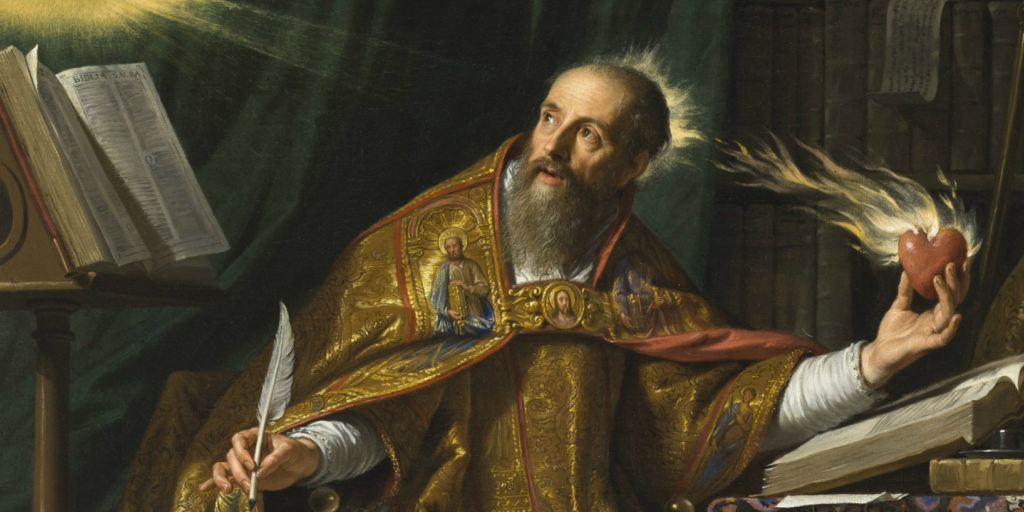
The Trinitarian Doctrine of Illumination in John
Illumination is one of the most profound experiences of the Christian faith. Illumination is the defining characteristic of the ‘Aha!’ moments of faith and as I will argue here, is at the heart of our participation in Christ’s work.
The doctrine of illumination answers the question: how do we receive knowledge of God and how does that knowledge impact us? It corresponds to the doctrine of Revelation. The doctrine of revelation answers the question: how does God make himself known to us? If God has put himself on display in revelation, but we have no means of receiving and understanding it, what good does it do? To this end, Illumination is reception of revelation.
Illumination has unquestionably been accepted as a work of the Holy Spirit. However, when we look at John’s Gospel, we see that transformation happened not only as people were illumined by the Spirit, but by their encounter with the light of the Logos—Word—who has come into the world. Moreover, when we look at John’s first letter, we see this light is ultimately grounded in God’s nature (1 John 1:5). When we read John, it is hard to ignore how Illumination involves the whole Godhead, not the Holy Spirit alone.
In this first part of a 2-part series, we will draw out the nature of this trinitarian illumination according to John. In the second part, we will go on to engage the pastoral, and quite personal, question of what the human experience of this trinitarian illumination is.
Trinitarian Illumination
Illumination has traditionally been discussed in two contexts: illumination in conversion and illumination of the Word of God. The first is the ‘aha!’ of coming to understand who Christ is, the second is the Spirit taking the words that fall upon our ears and applying them to our heart and mind.
One of the peculiarities of John’s Gospel is his tendency to tell long narratives of individual encounters with Christ. These narratives capture for us ‘Aha’ moments—moments of illumination when God makes sense in a way that transcended their ability to make sense of. And yet, they would never be the same again (i.e., woman at the well, the man born blind).
John’s Gospel is replete with references to Jesus as this agent of illumination: “In him was life, and that life was the light of men” (John 1:4). He was the light that “shines in the darkness” but is not overcome (1:5), He is the light which enlightens all humanity (John 1:9), and John the Baptist was witness to this light (1:8, 5:35). He is the light who has come into the world (3:19), indeed, the light of the world (8:12, 9:5) and it is in his light that we walk and do not stumble (11:9-10). Those who believe in this light become children of the light (12:36). Therefore, the very reason he came into the world was illumination (12:46).
But what did Christ illumine? Lights shines not only so that we may see it, but in order that by it, we may see something else.[1] A hallmark of John’s Gospel is the unique language Jesus uses to speak of his own relationship to the father. Beyond any other Gospel, Jesus speaks intimately of the Son’s relationship to the Father, that he was sent by the Father so that in knowing and seeing him, they may know and see the Father also (Jn. 3:17, 34-36; 5:36-40; 6:29, 57; 7:29; 8:42; 10:36, 11:42, 17:3, 8, 18,21,23,25; 20:21). Jesus speaks intimately of the Son’s relationship to the Father, that he was sent by the Father so that in knowing and seeing him, they may know and see the Father also. Click To Tweet
The light that Christ shines is none other than the light of the Father who sent him (1 John 1:5). George Stevens writes, “What God has done in revelation and redemption it was according to his nature to do. If God has loved the world, it is because he is love. If God has enlightened the world, it is because he is light.” That is to say, God’s mission to illumine people is grounded in his nature as light.
This reveals two elements to John’s triune doctrine of illumination that reflect two categories of theological inquiry more generally: The immanent trinity and the economic trinity. Simply put, the immanent trinity speaks of God in himself (nature, essence, and attributes), the economic trinity speaks of God in his work toward the world.
Illumination grounded in God’s nature as light
All of God’s actions are rooted in God’s being. This is not a philosophical principle, but the conclusion to the argument over the correspondence between who God is, and what God does. “Light” as a concept is ambiguous, and as an aspect of God’s nature, seems undefinable. However, God’s nature as light pertains to God’s holiness and God’s glory.
God’s nature as light means God is wholly separate from darkness and so his light is the radiance of his holiness. Likewise, glory is the brilliance of his own perfections. Glory is an inherently self-communicating attribute. It shines in itself with a light all its own. Therefore the mutual glorification of the Father, Son and Holy Spirit (John 8:54, 14:13, 16:14) in the immanent trinity is each of the persons of the trinity putting on display the glory of the others. It is this kind of illuminating communication that the Gospel of John displays in the economic trinity.
Illumination as Divine Mission in the World
The missiologist, Andrew Walls, writes that Christology itself is missiological. This is because the “Christian Faith itself rests on a divine act of translation: ‘the word became flesh and dwelt among us’ (John 1:14).”[2] Lest we divorce God’s action from God’s nature, the light which Christ shines in the world is none other than the Divine light which God is. This Logos was in the beginning with God and was God, and through him all things have been made—in him was life, and this life was the light of people.
Now, through this divine act of translation, this light shines among people. Christ’s work of enlightening all humanity is therefore, an aspect of the divine mission in the world with no other end but that those who see him and believe in him, would not remain in darkness but would see the one who sent him (12:44-46).
It is no coincidence that it is at this point that John introduces us to the paraclete. Not only is Jesus nearing the end of his ministry, but his disciples are nearing the entrance into a new reality. Jesus commissions the new chapter of the divine mission in the world. In this chapter the light of the World gives his Spirit to the disciples so that they may now go and be the light of the World themselves (Matt. 5).
John 14:15-17, 26; 15:26; 16:12-15, the most commonly cited Johannine passages in doctrinal constructions of illumination, articulates how the disciples will go on to participate in Christ’s work in the world as the Spirit of God makes it possible. The Spirit will speak and teach about the Son, The Spirit will glorify him and remind them of all that he said. The Spirit will guide them into truth and pass on what the Son has heard from the Father. As Karl Barth puts it, in all of this, Jesus “gives us his Holy Spirit in order that His own relationship to His Father may be repeated in us.”[3]
As John Overbeck put it, John the Evangelist puts on display an economy of divine light that is at work in the world. That is what we see throughout the Gospel. The divine light comes to confront a whole world of darkness with the enlightening logos who makes known the Father (John 1:18). In the wake of his work he leaves a people who live by the power of his Spirit’s illumination. For this reason, we conclude that triune Illumination is participation in the Son’s knowledge of the Father by the power of the Holy Spirit.
Footnotes
[1] C.S. Lewis famously made a similar remark about why he believed in Christianity, though that is not the point we are making here.
[2] Andrew F. Walls, The Missionary Movement in Christian History: Studies in Transmission of Faith (Edinburgh: T&T Clark, 1996), 26.
[3] Karl Barth, CD II/2:780.

